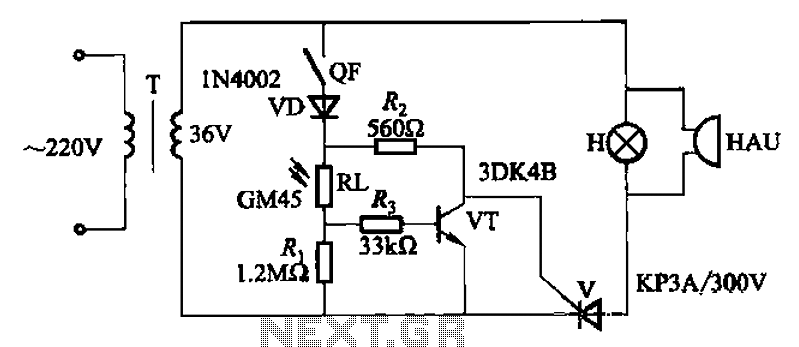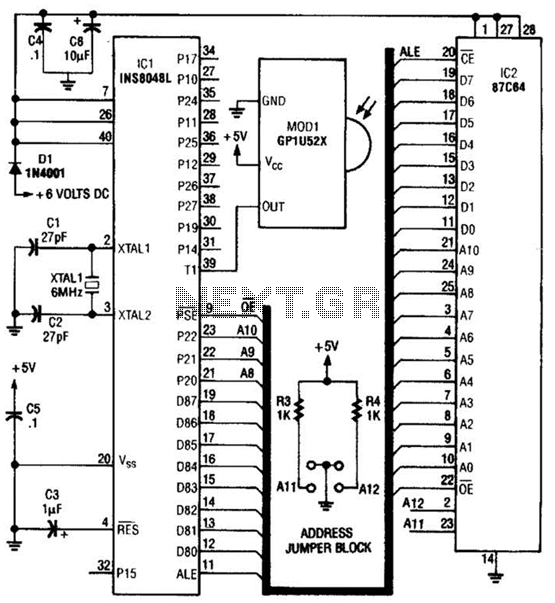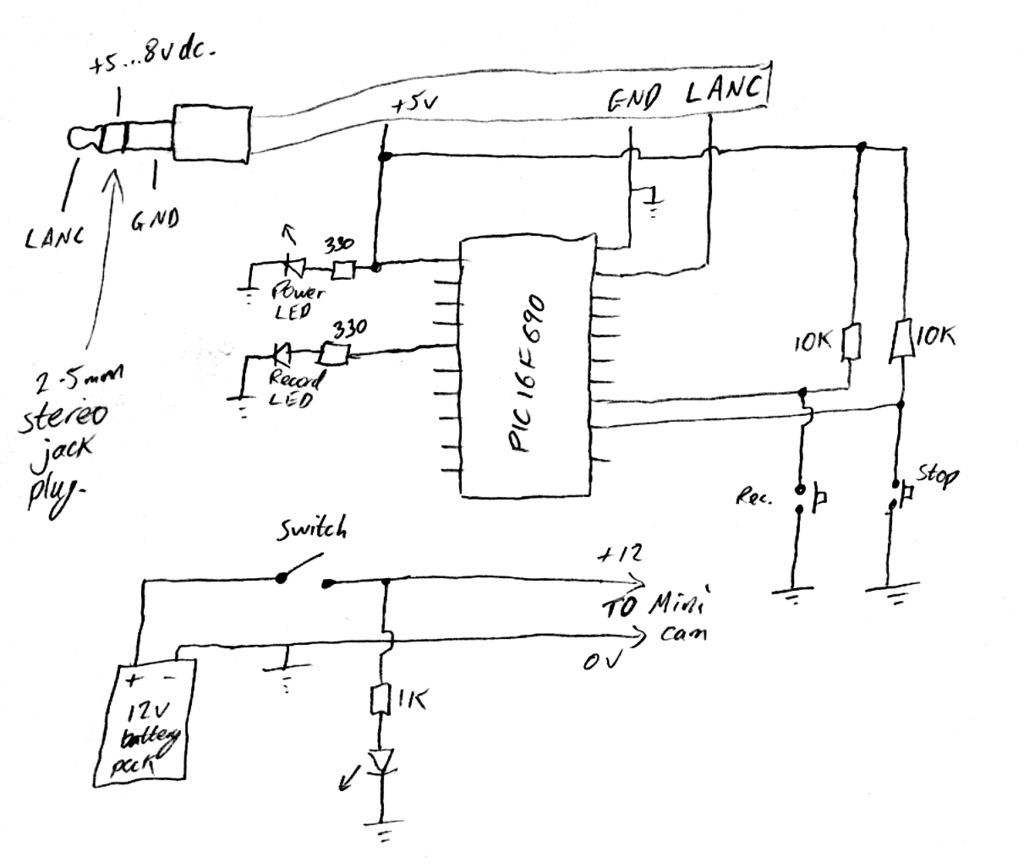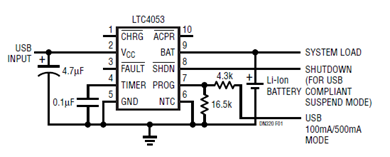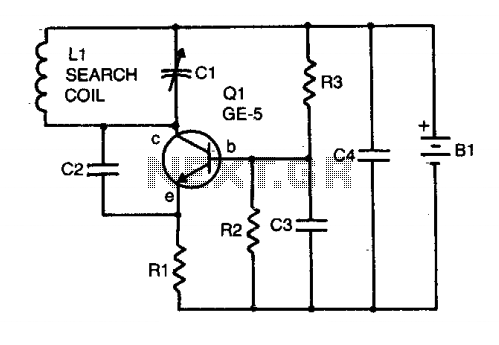
555 Anti-night sleep control circuit diagram recorder

This circuit is primarily designed as a timely reminder system for monitoring individuals on duty who may fall asleep. It features a detection circuit that processes minute signals. As the LED digital electronic timing clock displays the minute, the characters change over time, indicating a shift in the stroke from a to g. The detection utilizes minute pulses generated from IC2 to form a time recording and alarm circuit, ensuring timely reminders for supervision. Since the minute display can change with multiple strokes, it is essential to manage the minute pulses. A monostable delay circuit, comprising a 555 timer and components R10 and C8, is required to receive one pulse per minute, allowing for a timing delay of 10 seconds where the stroke pulse is inactive. The width of the monostable timing circuit is determined by the time constant of R10 and C8. VT1 serves as an inverting amplifier stage, applying negative pulses to the trigger terminal of the 555 timer, which outputs a shaped pulse (CP). IC2 acts as a decimal counter/distributor, with a maximum timing capacity of 9 minutes. Upon counting to the ninth pulse, the timer reaches 9 minutes, activating VT2, which energizes a relay that powers the sounder, providing a timely alert for the attendant. The reset switch K1 allows the count circuit to reset and restart the timing. If the switch K1 is not pressed, after accumulating 10 minutes, the output at pin 11 of IC2 triggers VT3, pulling in relay K2 to activate the alarm circuit, producing a sharp and intermittent sound to awaken the attendant. Additionally, pin 11 of IC2 is connected to pin 14 of IC3, allowing the timer circuit to light LED1 when high potential is reached. If the count exceeds 9 minutes, pin 9 of IC3 also goes high, illuminating LED9 in red to indicate that the attendant has been asleep for 9 minutes. It is important to note that pin 9 is connected to the CP output of the timing circuit, which remains sealed, ensuring that while no new records are made, the LEDs (LED1 to LED9) will continue to illuminate for reference. The display circuit is cleared on the right side. IC5 represents a standard multivibrator, oscillating at approximately 4Hz, with parameters set by RP1 and DW. After smoothing by capacitor C3, the output controls pin 5 of IC6, modulating the multivibrator to produce a varying tone acoustic signal. This signal is amplified by the 3AD5 to drive a 10W speaker, generating a loud and varied alarm signal.
The circuit can be divided into several key components, each playing a vital role in its functionality. The timing mechanism is central to the operation, utilizing a 555 timer configured in monostable mode. This setup allows the circuit to create a precise timing interval, ensuring that the reminder system activates accurately. The choice of resistors and capacitors (R10 and C8) is critical, as they define the timing characteristics of the monostable circuit, allowing for flexibility in adjusting the reminder intervals.
The counting mechanism, implemented with IC2, is essential for tracking the elapsed time. This IC provides the ability to count pulses and, when reaching the designated threshold, activates the corresponding output to trigger the alarm system. The integration of transistors (VT1, VT2, VT3) enhances the circuit's capability to handle varying voltage levels and control higher power devices such as relays.
The alarm system is designed to produce a sound that can effectively awaken an individual, utilizing a speaker driven by a power amplifier (3AD5). The varying tones generated by the modulation of the multivibrator (IC6) ensure that the alarm is not only loud but also attention-grabbing, which is crucial for its intended purpose.
Overall, this timely reminder circuit is a sophisticated assembly of components working in harmony to provide an effective solution for monitoring individuals on duty, ensuring they remain alert and attentive during their responsibilities. The design emphasizes reliability, accuracy, and user-friendliness, making it a valuable addition to any supervisory environment. As shown, this circuit is mainly used in a timely reminder dozing who can supervise and the number of records on duty were asleep. Figure d detection circuit is a minute signal . When the LED digital electronic timing clock minute display character change over time, Figure c strokes a ~ g end there will be at least a change. The detection of the use of minute pulses from IC2 form a time recording and alarm circuit for duty to remind supervision.
Since the display minute of seven (a ~ g) at the same time with a couple of strokes may change, so remove the minute pulses may have several. Monostable delay circuit 555 and R10, C8 and other components, it needs to receive one pulse per minute, that the timing of time 10 seconds remaining stroke pulse does not work.
Monostable timing circuit width by R10 and C8 time constant to decide. VT1 for the inverting amplifier stage, negative pulse is applied to the trigger terminal 2 feet, flip the circuit 555 outputs a shaped pulse CP. IC2 is a decimal counting/distributor, longest timing of 9 minutes. When the count to the first nine pulse, which is the cumulative timer to 9 minutes, was 9 feet high potential, VT2 conduction, relay, Fig.
B sounder power is turned on, a timely caution attendant press the reset switch K1, the count circuit is reset, time to start again. If you do not press the switch K1,1 minutes after that accumulated to the first 10 minutes, was 11 feet high potential, VT3 conduction, the relay K2 pull, the power diagram e alarm circuit is turned sharp and intermittent alarm sound sleepy attendant will wake up and timely press reset switch K1.
11-pin output of IC2 is also added to the diagram of f IC3 14 feet, so that the timer circuit was three feet high potential, LED1 light. Thus, if the over-nine 10 minutes, 9 feet IC3 also showed high potential, LED9 red light, indicating sleepy attendant has up to 9 times.
Noting 9 feet by D2 connected to IC3 end of CP, 9 feet high has been described timing circuit CP end sealed, no record, but LED1 ~ LED9 luminescence will remain for future reference. Figure f cleared the right of the display circuit. IC5 is a diagram of a typical e multivibrator, the frequency of the oscillation parameters shown about 4Hz square wave around, the RP1, DW, after C3 buck smooth acceleration to IC6 control terminal 5 feet of IC6 multivibrator modulated, so that given a change of tone acoustic signal, power amplification by 3AD5 promote 10W speaker, issued a deafening alarm signal varying tones.
The circuit can be divided into several key components, each playing a vital role in its functionality. The timing mechanism is central to the operation, utilizing a 555 timer configured in monostable mode. This setup allows the circuit to create a precise timing interval, ensuring that the reminder system activates accurately. The choice of resistors and capacitors (R10 and C8) is critical, as they define the timing characteristics of the monostable circuit, allowing for flexibility in adjusting the reminder intervals.
The counting mechanism, implemented with IC2, is essential for tracking the elapsed time. This IC provides the ability to count pulses and, when reaching the designated threshold, activates the corresponding output to trigger the alarm system. The integration of transistors (VT1, VT2, VT3) enhances the circuit's capability to handle varying voltage levels and control higher power devices such as relays.
The alarm system is designed to produce a sound that can effectively awaken an individual, utilizing a speaker driven by a power amplifier (3AD5). The varying tones generated by the modulation of the multivibrator (IC6) ensure that the alarm is not only loud but also attention-grabbing, which is crucial for its intended purpose.
Overall, this timely reminder circuit is a sophisticated assembly of components working in harmony to provide an effective solution for monitoring individuals on duty, ensuring they remain alert and attentive during their responsibilities. The design emphasizes reliability, accuracy, and user-friendliness, making it a valuable addition to any supervisory environment. As shown, this circuit is mainly used in a timely reminder dozing who can supervise and the number of records on duty were asleep. Figure d detection circuit is a minute signal . When the LED digital electronic timing clock minute display character change over time, Figure c strokes a ~ g end there will be at least a change. The detection of the use of minute pulses from IC2 form a time recording and alarm circuit for duty to remind supervision.
Since the display minute of seven (a ~ g) at the same time with a couple of strokes may change, so remove the minute pulses may have several. Monostable delay circuit 555 and R10, C8 and other components, it needs to receive one pulse per minute, that the timing of time 10 seconds remaining stroke pulse does not work.
Monostable timing circuit width by R10 and C8 time constant to decide. VT1 for the inverting amplifier stage, negative pulse is applied to the trigger terminal 2 feet, flip the circuit 555 outputs a shaped pulse CP. IC2 is a decimal counting/distributor, longest timing of 9 minutes. When the count to the first nine pulse, which is the cumulative timer to 9 minutes, was 9 feet high potential, VT2 conduction, relay, Fig.
B sounder power is turned on, a timely caution attendant press the reset switch K1, the count circuit is reset, time to start again. If you do not press the switch K1,1 minutes after that accumulated to the first 10 minutes, was 11 feet high potential, VT3 conduction, the relay K2 pull, the power diagram e alarm circuit is turned sharp and intermittent alarm sound sleepy attendant will wake up and timely press reset switch K1.
11-pin output of IC2 is also added to the diagram of f IC3 14 feet, so that the timer circuit was three feet high potential, LED1 light. Thus, if the over-nine 10 minutes, 9 feet IC3 also showed high potential, LED9 red light, indicating sleepy attendant has up to 9 times.
Noting 9 feet by D2 connected to IC3 end of CP, 9 feet high has been described timing circuit CP end sealed, no record, but LED1 ~ LED9 luminescence will remain for future reference. Figure f cleared the right of the display circuit. IC5 is a diagram of a typical e multivibrator, the frequency of the oscillation parameters shown about 4Hz square wave around, the RP1, DW, after C3 buck smooth acceleration to IC6 control terminal 5 feet of IC6 multivibrator modulated, so that given a change of tone acoustic signal, power amplification by 3AD5 promote 10W speaker, issued a deafening alarm signal varying tones.
